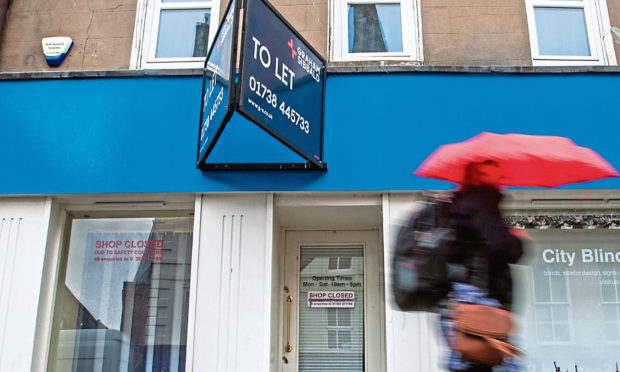More than one-in-10 shops are now boarded up as the pressure grows on traditional retail outlets across Scotland.
The latest Scottish Retail Consortium (SRC) / Springboard footfall and vacancies monitor found the void rate in Scottish town centres rose to a seven-year high of 11.2 per cent last month.
The figure represents a 2% worsening of the situation since January and means Scotland performed more poorly than the wider UK market, where the average vacancy rate is 9.2%.
The market north of the border has also deteriorated at a faster rate in 2018 than the UK as a whole.
“The vacancy rate in Scotland’s town centres has reached a seven-year high, whilst shopper footfall has dwindled for twelve consecutive months,” David Lonsdale, SRC director said.
“This pointed deterioration in both footfall and the shop vacancy rate underlines just how challenging retail market conditions currently are.
“It is true that retailers with a strong multi-channel offer are increasingly adept at reaching time-constrained consumers.
“That said, the fact remains that many retail business models are being upended by changes in shopping habits, new technology and rising costs.
“Nowhere is this being felt more acutely than on our high streets and in our town centres.
“Responding positively to all of this requires substantial outlays on digital platforms, a highly skilled workforce, and revamped logistics and distribution capabilities.
“This is hugely challenging against a backdrop in which demand is weak, consumers are being squeezed, and government-imposed tax and regulatory costs keep ratcheting up.”
Total footfall figures show a 5.6% year-on-year drop in Scotland in April – the 12th consecutive month of decline in the number of people out and about actively shopping.
However, footfall to high streets, shopping centres and retail parks was even worse than the general decline, down 8.5% in April.
Springboard’sDiane Wehrle said negative like-for-like sales were expected.
She added: “Indeed, the parlous state of retail trading is highlighted by the fact that footfall post 5pm recovered and rose by 7.9% in the last two weeks of the month, whilst day time footfall declined by -1.6%.
“Our in-store footfall trackers demonstrate that hospitality outlets lost proportionately less footfall than bricks and mortar destinations generally.
“So it is clear that retail trading is doubly challenged by a thrifty consumer in concert with a continuing predisposition towards leisure rather than retail spend.”
